#maria josepha of bavaria
Photo

A portrait of Maria Josepha of Bavaria, Holy Roman Empress as the second wife of Joseph II.
#maria josepha of bavaria#holy roman empress#18th century#18th century art#house of habsburg lorraine#house of wittelsbach#long live the queue
38 notes
·
View notes
Text

Maria Josepha of Bavaria, Holy Roman Empress by Martin van Meytens.
#full length portrait#maria josepha of bavaria#holy roman empress#martin van meytens#haus wittelsbach#haus habsburg lothringen#official portrait#house of habsburg lorraine#heiliges römisches reich#full-length portrait
4 notes
·
View notes
Photo

Josef Albert
Maria Josepha of Portugal, Duchess of Bavaria
circa 1874
#Josef Albert#photography#Maria Josepha of Portugal#1874#old photograph#history#Portugal#Germany#Bavaria#royalty
457 notes
·
View notes
Text


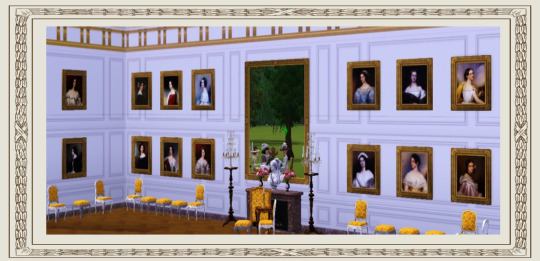
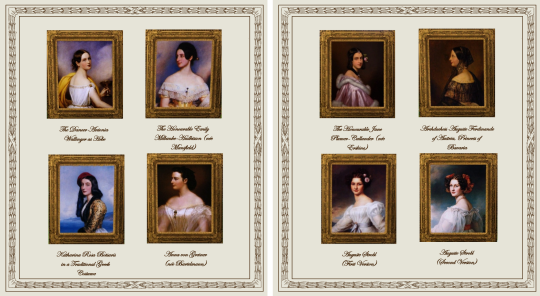


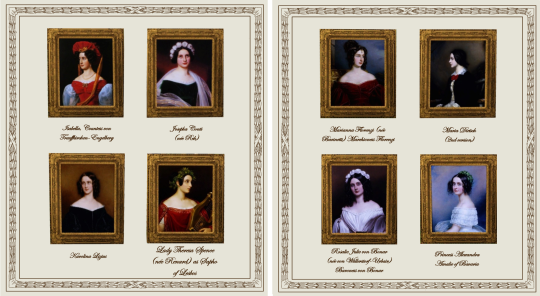
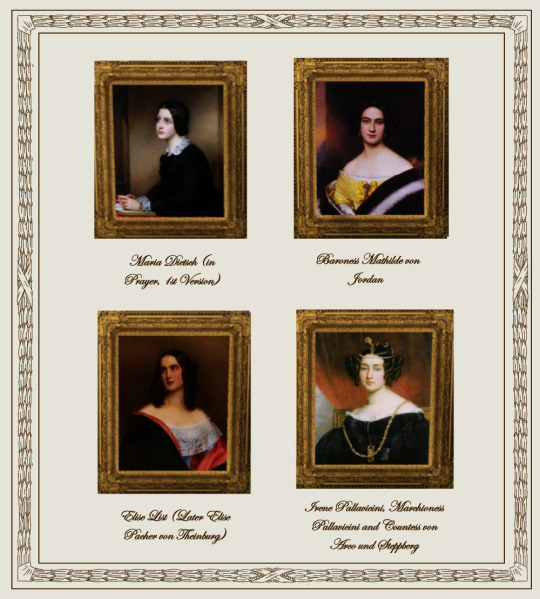

King Ludwig Ist's Gallery of Beauties.
A retexture by La Comtesse Zouboff — Original Mesh by @thejim07
The Gallery of Beauties (Schönheitengalerie) is a collection of 38 small portraits of the most beautiful women from the nobility and middle classes of Munich, Germany painted between 1827 and 1850 (mostly by Karl Joseph Stieler, appointed court painter in 1820) and gathered by Ludwig I of Bavaria in the south pavilion of Nymphenburg Palace in Munich. Two additional ones were created by Friedrick Drück and one portrait was stolen in the XXth century and remains missing.
The set includes all the 38 portraits, with the original frame swatches, fully recolorable. The portraits are of:
Friederike von Gumppenberg (later Baroness von Gumppenberg).
Amalia von Schintling.
Amalie Maximilianovna von Krüdener (née von Lerchenfeld) Baroness von Krüdener.
Anna Hillmayer.
Anna von Greiner (née Bartelmann)
Antonietta Cornelia Vetterlein.
Archduchess Auguste Ferdinande of Austria, Princess of Bavaria.
Auguste Strobl (first version).
Auguste Strobl (second version).
Baroness Mathilde von Jordan.
Carlotta von Boos zu Waldeck (née von Breidbach-Bürresheim) Baroness von Breidbach-Bürresheim.
Caroline Maximiliana Maria von Holnstein (née von Spiering) Countess von Holnstein aus Bayern
Elise List (later Elise Pacher von Theinburg
Eliza Rosanna James (née Gilbert), Known ss Lola Montez.
Helene Kreszenz Sedlmayr.
Irene Pallavicini, Marchioness Pallavicini and Countess von Arco un Steppberg.
Isabella, Countess von Traufkirchen-Engelberg.
Jane Elizabeth Digby, Later Baroness von Venningen.
Josepha Conti (née Reh).
Karolina Lizius.
Katharina Rosa Botsaris in a Traditional Greek Costume.
Lady Theresa Spence (née Renard) as Sapho of Lesbos.
Maria Dietsch (In prayer, first version).
Maria Dietsch (second version).
Marianna Florenzi (née Bacinetti) Marchioness Florenzi.
Marie Friederike Franziska Hedwig of Prussia, Crown Princess of Bavaria.
Maximiliane Borzaga.
Nanette von Kaulla.
Princess Alexandra Amalie of Bavaria.
Caroline von Oettingen-Wallerstein (later Countess von Waldbott-Bassenheim.
Regina Daxenberger.
Rosalie Julie von Bonar (née von Wüllerstorf-Urbair) Baroness von Bonar.
Sophie Friederike Dorothea Wilhemine, Archduchess of Austria (née Princess of Bavaria).
The Actress Charlotte von Hagn-Schwab as Thekla in Schiller's "Wallenstein".
The Actress Friederica Katharina "Willhemine" Sulzer.
The Dancer Antonia Wallinger as Hebe.
The Honourable Emily Mikbanke-Huskisson (née Mansfield)
The Honourable Jane Plumer-Callander (née Erskine)
Found under decor > paintings for 540§
Retextured from the "Portrait of Balsasarre Castiglione" found here
-------------------------------------------------------
CC shown here:
Wall paneling, mirror, girandole and floor by @thejim07
Fireplace by @hydrangeachainsaw
Chairs, stools, flower vases, bust, table, fireplace screen and candelabra by @joojconverts
Torchere by @martassimsbookcc
(Btw excuse my sims' reflection having tea)

Drive
(Sims3Pack | Package)
(Useful tags below)
@joojconverts @ts3history @ts3historicalccfinds @deniisu-sims @katsujiiccfinds
-------------------------------------------------------
#the sims 3#ts3#sims 3 cc#portrait#s3cc#sims 3#sims 3 download#sims 3 decor#joseph karl stieler#Munich#germany#nymphenburg#wall decor
85 notes
·
View notes
Text
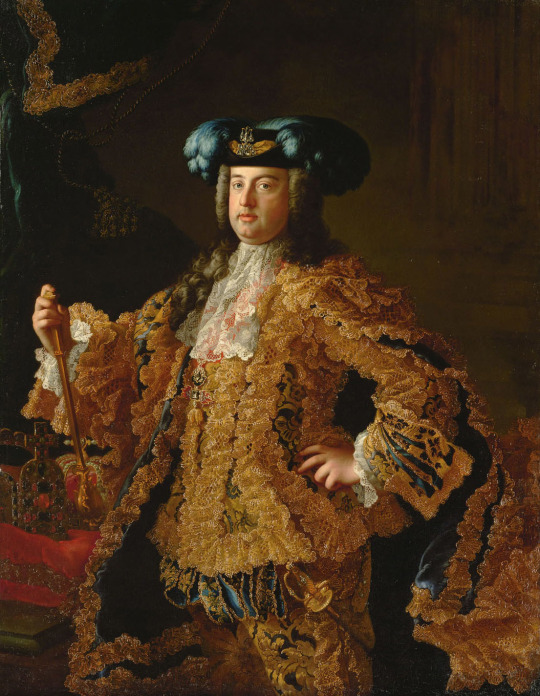
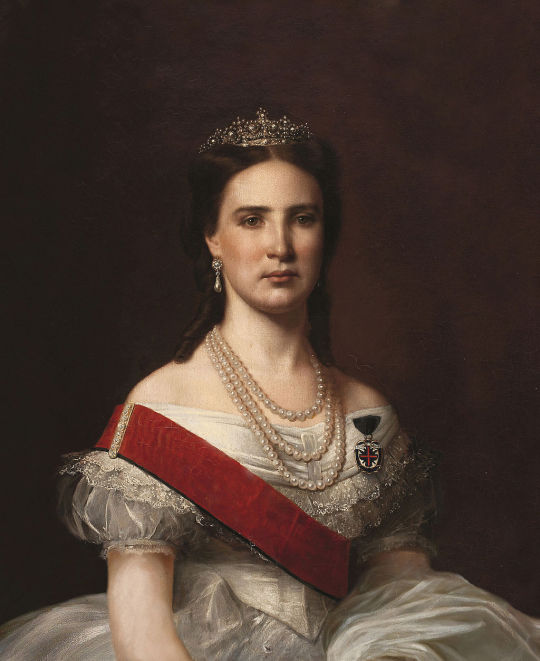
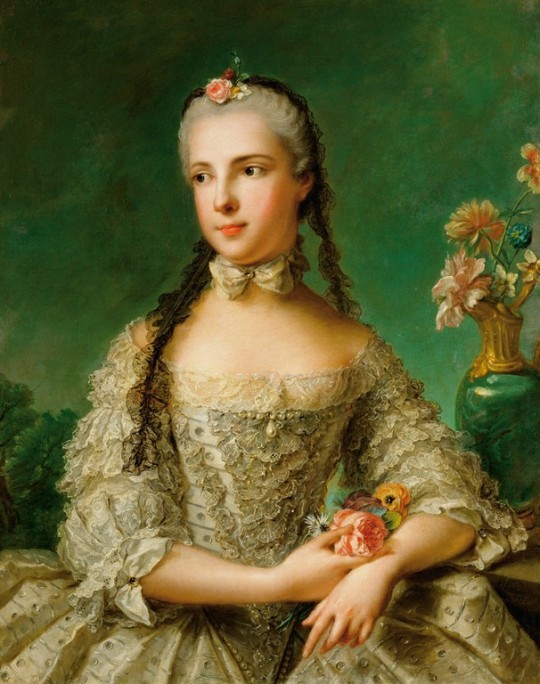

Franz Stephan, Holy Roman Emperor (1708-1765): He has several titles of his own, but he was mainly Maria Theresa's consort.
Charlotte of Belgium, Empress of Mexico (1840-1927): Archduchess of Austria and Empress of Mexico by marriage to Maximilian.
Princess Isabella of Parma (1741-1763): First wife of Joseph II, daughter of the Duke of Parma. She also may have possibly had a romantic affair with her sister in law.
Maria Josepha of Bavaria (1739-1767): Second wife of Joseph II, their marriage was cold. After her death, Joseph swore off marriage.
Also, Rudolph II did not marry and thus did not have a consort. But I do encourage you to Google his mistress Kateřina Stradová.
#best habsburg bracket#bonus round#bet you wish that you'd voted for Franz Joseph now#because you know who'd be in this poll then
18 notes
·
View notes
Photo
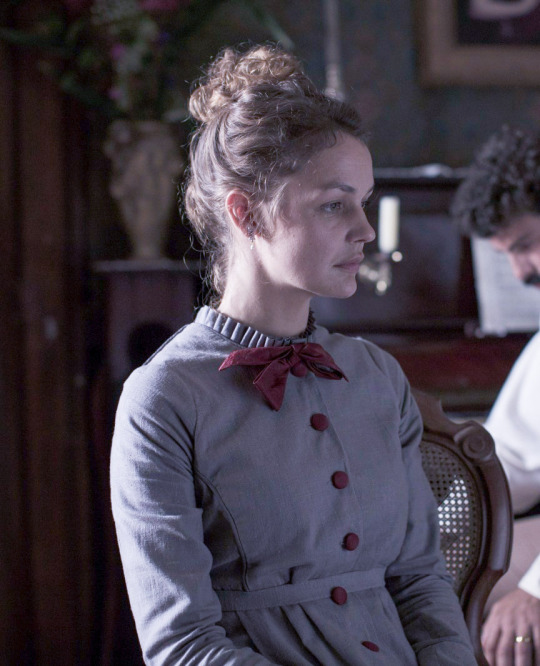

Luise Heyer as Maria Leopoldina of Austria, the Empress Consort of Brazil, Queen Consort of Portugal and Archduchess of Austria
Dona Maria Leopoldina of Austria (22 January 1797 – 11 December 1826) was born Caroline Josepha Leopoldine Franziska Ferdinanda of Habsburg-Lorraine in Vienna, Austria, Holy Roman Empire. She was the daughter of Holy Roman Emperor Franz II and Empress Maria Theresa of Naples and Sicily. In 1817 the Archduchess married Prince Dom Pedro of Braganza (12 October 1798 – 24 September 1834), heir to Portugal, later the Emperor Dom Pedro I of Brazil and King Dom Pedro IV of Portugal. The couple had 7 children: Queen Maria II of Portugal, Miguel, Prince of Beira, João Carlos, Prince of Beira, Princess Januária of Brazil, Princess Paula of Brazil, Princess Francisca of Brazil and Emperor Dom Pedro II of Brazil. On September 2, 1822 while she was the Acting Princess Regent of the Kingdom of Brazil in the absence of her husband Maria Leopoldina signed the Decree of Independence, declaring Brazil separate from Portugal. She died at age 29 in 1826 after a miscarriage. As Acting Regent Maria Leopoldina was the first woman to govern an independent Brazil, the first empress consort of the country, the first empress of the Americas and the first woman to govern an independent American country.
Victoria Guerra as Amélia of Leuchtenberg, the Empress Consort of Brazil and Duchess of Braganza
Dona Amélia of Leuchtenberg (31 July 1812 – 26 January 1873) was born Amélie Auguste Eugénie Napoléonne de Leuchtenberg in Milan, Kingdom of Italy. She was the daughter of Eugène de Beauharnais, Duke of Leuchtenberg and Princess Augusta of Bavaria, Duchess of Leuchtenberg. She was the second wife of Emperor Dom Pedro I of Brazil after their marriage in 1829 and they had one child, the Princess Maria Amélia of Brazil. After Dom Pedro I abdicated the Brazilian crown, Amélia accompanied her husband back to Europe. They held the titles of Duke and Duchess of Braganza until Pedro’s dead in 1834. Amélia died in Lisbon at the age of 60 in 1873.
A VIAGEM DE PEDRO | PEDRO, BETWEEN THE DEVIL AND THE DEEP BLUE SEA (2021). Dir. Laís Bodanzky
#a viagem de pedro#perioddramaedit#filmedit#movieedit#weloveperioddrama#worldcinemaedit#perioddramasource#onlyperioddramas#historicwomendaily#periodedits#braziliansource#cinematv#cinemapix#fyeahmovies#motionpicturesource#filmtv#filmtvdaily#userperioddrama#femaledaily#femalecharacters#flawlessbeautyqueens#historyedit#women in history#period drama#pedro between the devil and the deep blue sea#brazilian cinema#brazilian movies#mine#mine: edit#brazilian stuff
75 notes
·
View notes
Text

Rote Nelken in der Vase , 1980
Maria del Pilar von Bayern (1891-1987, German)
Princess Pilar of Bavaria (Maria del Pilar Eulalia Antonia Isabella Ludovika Franziska Josepha Rita Euphrasia von Wittelsbach, princess of Bavaria) was the only daughter of Prince Ludwig Ferdinand of Bavaria and his wife Infanta Maria de la Paz of Spain.
Princess Pilar was the co-author of a 1932 biography, Every Inch a King, about her cousin King Alfonso XIII of Spain. Princess Pilar was also an artist and headed the Bavarian branch of the German Red Cross for 40 years.
Other painter's works: https://www.artnet.com/artists/maria-del-pilar-von-bayern/
#dianthus#carnation#fruits#painting#still life#flowers#flower vase#women in art#woman painter#german art#Maria del Pilar von Bayern#20th century painting#20th century art
4 notes
·
View notes
Text

Maria Josepha of Portugal, Duchess of Bavaria
1 note
·
View note
Photo

Maria Josepha Antonia Walburga Felicitas Regula of Bavaria (20 March 1739 – 28 May 1767) was Holy Roman Empress, Queen of the Romans, Archduchess of Austria, Grand Duchess of Tuscany, among other titles, by her marriage to Joseph II, Holy Roman Emperor. By birth, she was a Princess and Duchess of Bavaria as the daughter of Charles VII, Holy Roman Emperor, Elector of Bavaria, and Archduchess Maria Amalia of Austria.
8 notes
·
View notes
Photo

“Maria Josepha of Bavaria really had a tragic life and it’s just sad to read. She wasn’t beautiful but she seemed to be a nice person by all accounts (even her indifferent husband admitted this). I understand Joseph II’s attachment to his first wife but he didn’t have to be such a cold-hearted jerk to Maria Josepha like this, making unfulfilled promises of trying to be nice & he didn’t even bother to attend her funeral!” - Submitted by Anonymous
14 notes
·
View notes
Photo


The British Royal Collection has these two nearly identical, save for the hairstyles, engravings in it.
The one on the top is described as:
An etching of Maria Josepha of Bavaria, second wife of Holy Roman Emperor Joseph II. A full-length equestrian portrait, riding to the left, wearing a lace-trimmed dress and ermine-lined mantle while holding a sceptre in her right hand. She rides within a landscape featuring a castle in the background and is accompanied by an attendant. Beneath the image is a German inscription beginning 'IOSEPHA. Prinzessin von Bayren...' The plate has been trimmed.
The one on the bottom is described as:
Engraving with etching of Marie Antoinette, Queen of France. Whole length equestrian figure with hair in ringlets, tiara, jewelled earrings and necklace, lace tucker, embroidered gown, jewelled bodice, and ermine mantle. The Queen is pictured on horseback, with an attendant holding a helmet to the right and with a view of a landscape in the background. With German inscription below.
Even some of the writing on the bottom corners is the same, so it appears they just changed it up a bit, added a new caption, and poof! A portrait of Josepha is suddenly her sister in law!
#maria josepha of bavaria#Marie Antoinette#18th century#the royal collection#house of habsburg lorraine#austria#long live the queue
11 notes
·
View notes
Photo

Maria Josepha of Bavaria, Holy Roman Empress (20 March 1739 - 28 May 1767)
#maria josepha of bavaria#maria josepha antonia walburga felicitas regula#holy roman empress#daughter of charles vii holy roman emperor#wife of joseph ii holy roman emperor#history#women in history#18th century#art
3 notes
·
View notes
Photo

Duchess Maria Josepha in Bavaria, nee Infanta of Portugal, with her three daughters, Marie Gabrielle, Elisabeth and Sophie Adelheid.
#Duchess Maria Josepha in Bavaria#Infanta Maria Jose of Portugal#Infanta of Portugal#Duchess in Bavaria#Wittelsbach#Duchess Marie Gabrielle in Bavaria#Princess of Bavaria#Duchess Elisabeth in Bavaria#queen of belgium#history#Royalty#Princess
45 notes
·
View notes
Photo








sisters who married or were engaged to the same man
requested by anonymous
#weloveperioddrama#perioddramaedit#history#historyedit#isabella of aragon#helene caroline of bavaria#Elisabeth of Bavaria#maria of aragon#Maria Josepha of Austria#maria carolina of austria#atossa#artysone#rachel#leah#ingund#aregund#cao xian#cao jie#cao hua#hailanzhu#bumubutai#16th century#6th century#bc#jewish history#mongolian history#chinese history#French History#15th century#Spanish History
294 notes
·
View notes
Text

IT’S ALL BECOMING PAINFULLY REAL!!!!!!!!!!
#im losing my mind its happening#cant believe this is single handedly making me want to not k*ll mysel#they also have maria anna and josepha of bavaria on the cast list aaaaah#and ofc antoinette like 3 times but whatever#im gonna cry bro fully#iza#maria theresia
1 note
·
View note
Photo

The Archduke Charles Francis Joseph was a mild young man; he was the perfect type of an Austrian “nobleman,” full of vanity, with very little learning, of dashing manners, good-natured, but could hardly be called keen-witted. Nevertheless, he stood next to his uncle in the order of succession to the realm of the Habsburgs, and, as such his marriage was bound to be a very serious affair. Maria Josepha understood this perfectly, and almost before he had left school she started looking for a daughter-in-law after her own heart.
Bavaria boasted of several whose faith would not prove an impediment, a Protestant princess being, of course, out of the question. The Wittelsbachs, for instance, had always been devout Roman Catholics, but the Archduchess did not care for an alliance with that House; its members had already far to often intermarried with the Austrian Royal line. She held that consanguity was not conducive to happy consequences in the question of marriages. For that same reason she rejected the idea of allying her son to an Archduchess, though there weree many who would have been but too willing to accept the prospect of becoming an Empress. She disliked the Orleans because the example of her cousin, the Archduchess Dorothea, who was wedded to the French Pretender, had proved such a miserably unhappy affair. There remained, therefore, the Italian and Spanish Bourbons, whose blood was just as ancient as that of the Habsburgs, and whose opinions were entirely in accordance with her own. Among them the family of the Duke of Parma had captivated all her sympathies, owing to its strictly Catholic principles, and to the care with which the Duchess, a Princess of Braganza by birth, and the sister of Archduchess Thérèse her husband's stepmother, had brought up her numerous daughters. It was true that imbecility was supposed to be hereditary in that branch of the Bourbon family, and that out of the twenty children that his two wives had borne to the Duke of Parma, several were confirmed idiots; but somehow this fact did not seem to strike Maria Josepha, and she advised her son to spend a few days at the castle to which the widowed Duchess had retired, and to become acquainted with the many young and, as she supposed, charming girls who were sharing her solitude there.
The Archduke obeyed his mother in this as in everything else and he started for the Villa Pianore, in Tuscany, where the Parma family used to spend its summers. When there he quickly became captivated by the youthful charms of the Princess Zita, one of the youngest in this happy and numerous household, and after having solicited his mother's and his uncle's consent, he proposed to her, and, as may be easily imagined was at once accepted.
Strangely enough, this marriage did not appeal to the Emperor Francis Joseph, who had been secretly hoping that his eventual successor might chose as a wife one of uncle's own granddaughters; either the child of Archduke Rudolph, or one of the daughters of Archduchess Valerie.
The Royal Marriage Market of Europe - Catherine Radziwill, 1915
#Emperor Karl of Austria#Empress Zita#austrian royal family#1910s#Archduchess Maria Josepha#Maria Josepha of Saxony#Emperor Franz Josef#anecdote
25 notes
·
View notes